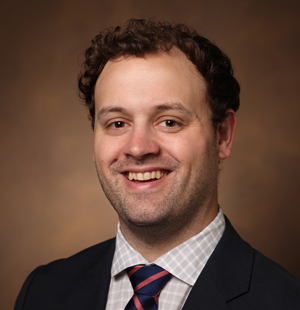by Christina Echegaray
Damage or removal of calcium-regulating parathyroid glands during endocrine surgery can put children at risk for poor growth and slow mental development. Preserving the often rice-sized organ in children is vital, but not always easy.
In a first-of-its-kind study in children, researchers at Monroe Carell Jr. Children’s Hospital at Vanderbilt, Vanderbilt University Medical Center, and Vanderbilt University found that a probe technology that uses near-infrared auto-fluorescent lighting helps positively identify and preserve the parathyroids during endocrine surgery.
The findings, reported in the journal The Laryngoscope, come more than a decade after Vanderbilt University biomedical engineers and endocrine surgeons first discovered that near-infrared autofluorescence (NIRAF) was shown effective in identifying parathyroids during endocrine surgery in adults. The team went on to develop a probe technology that later earned FDA approval.

“This technology helps us identify the parathyroid glands as an additional option than just relying on your eyes and experience. This is the first study in children that we know of to assess the accuracy of the probe-based near-infrared autofluorescence for parathyroid detection,” said Ryan Belcher, MD, MPH, assistant professor of Pediatric Otolaryngology–Head and Neck Surgery at Monroe Carell and study investigator and lead author.
“If you damage the parathyroid during surgery, it can be very detrimental for children, and they can end up being on calcium for the rest of their lives. This device helps identify and ultimately can help preserve them during the surgery in children.”
Anita Mahadevan-Jansen, PhD, professor of Biomedical Engineering and the Orrin H. Ingram Chair in Biomedical Engineering, is also the lead investigator on this latest study with Belcher.
The body has four parathyroid glands, in two pairs, in the neck. Sitting next to, atop of, or sometimes inside the thyroid, parathyroids produce hormones that regulate blood calcium levels to support heart, nervous system, kidney and bone function.
Their miniature size can make detection difficult even to a seasoned surgeon’s naked eye.
This study, “Identifying Parathyroids in Pediatric Thyroid/Parathyroid Surgery by Near Infrared Autofluorescence,” enrolled 19 children, all between the ages of 6 years and 16 years, who had endocrine surgery (thyroidectomy or parathyroidectomy) between 2019 and 2022. The researchers found that the probe technology accurately detected the parathyroid gland 95.8% of the time, with 46 out of 48 correctly identified.
Children tend to have higher post-surgical rates of hypocalcemia (low calcium levels) due to unintentional removal of the parathyroid glands during thyroidectomy because of the difficulty of visualizing them in children’s necks.
Due to damaged or removed glands, about 40% of cases in children can have temporary hypoparathyroidism while can be permanent in up to 8% of cases in children the hypoparathyroidism.
“In our study, nearly every child in our study returned to normal parathyroid hormone levels,” Belcher said.
This study builds on work that began at Vanderbilt in 2008, when then general surgery resident, Lisa White, MD, noted the difficulty of locating the parathyroid gland during endocrine surgery. She contacted Mahadevan-Jansen, who investigates the use of light-based technologies for biomedical applications to see if her research could be applied to the problem.
After Mahadevan-Jansen and her team discovered that parathyroid glands exhibit a higher degree of near infrared autofluorescence compared to adjacent neck tissues, they developed PTeye, a hand-held, probe-based device which provides real-time guidance in identifying the parathyroid gland during surgery. When parathyroid tissue is detected, the system provides an audio signal and visual display.
“We have inherent advantages with this kind of technology being developed at our institution,” Belcher said.
“We have experienced surgeons and researchers who are on the cutting-edge of medicine, with a dedicated team across surgery, radiology, pathology and endocrinology — all with the goal to improve outcomes for children and to be leaders in discovery and guidelines that advance the care we deliver.”
Other authors of this study include: Giju Thomas, PhD; Parker Willmon, BS; Jean-Nicolas Gallant, MD, PhD; Naira Baregamian, MD; Monica Lopez, MD, MS; Carmen C. Solorzano, MD.












